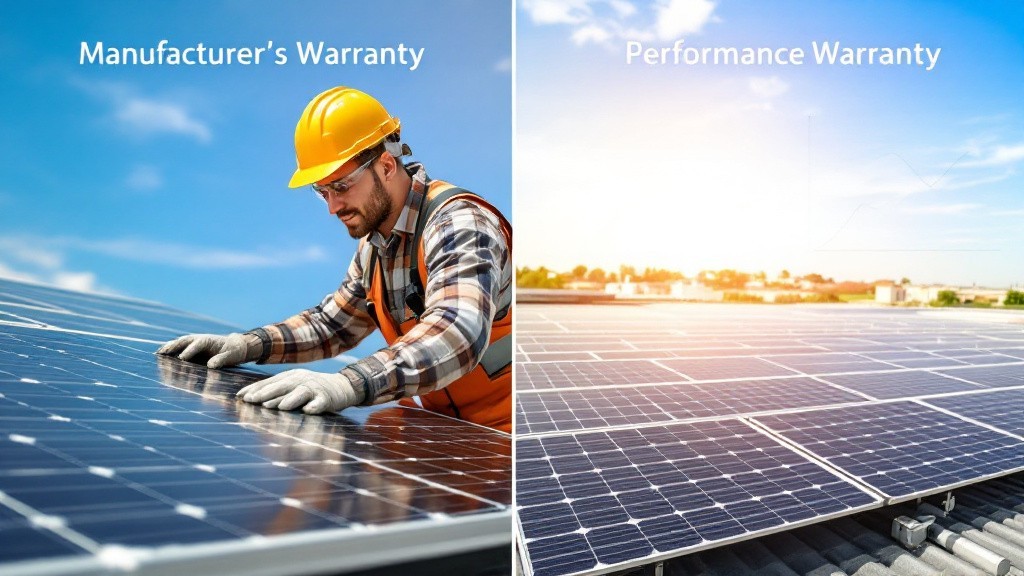Difference Between Manufacturer’s Warranty & Performance Warranty
March 20, 2025

When investing in solar panels or other energy-efficient products, understanding the warranty coverage is essential. There are typically two types of warranties offered: Manufacturer’s Warranty and Performance Warranty. While both serve to protect your investment, they cover different aspects of your solar system’s functionality and longevity.
In this guide, we’ll break down the key differences between these warranties, why they matter, and how to choose the best solar solution for your home.
1. What Is a Manufacturer’s Warranty?
A Manufacturer’s Warranty covers defects in materials and workmanship. This means if there’s a manufacturing flaw or a faulty component, the manufacturer will repair or replace the product within a specified time frame.
Covers physical defects or failures caused by poor manufacturing.
Typically lasts 10–25 years, depending on the product and manufacturer.
Does not cover gradual efficiency loss over time.
💡 Want to learn more about solar panel durability? Check out 260W Solar Panels: Everything You Need to Know to understand how long your panels can last.
2. What Is a Performance Warranty?
A Performance Warranty guarantees that your solar panels will maintain a certain efficiency level over time. It ensures that your panels will still generate power at a minimum guaranteed rate, even after years of use.
Covers declining efficiency due to wear and tear over decades.
Most solar panels come with a 25-year performance warranty.
Ensures that your solar panels operate at 80–90% of their original efficiency even after decades.
💡 Wondering how solar panels work to generate energy efficiently? Read How Do Home Solar Panels Work for an in-depth guide.
3. Manufacturer’s Warranty vs. Performance Warranty: Key Differences
| Feature | Manufacturer’s Warranty | Performance Warranty |
|---|---|---|
| What It Covers | Defects in materials and manufacturing flaws | Gradual efficiency loss over time |
| Duration | 10–25 years | Typically 25 years |
| Main Purpose | Ensures the product functions properly | Guarantees energy production levels |
| Covers Physical Damage? | Yes, if caused by manufacturing defects | No |
| Covers Wear and Tear? | No | Yes, in terms of power output decline |
💡 Looking for solar options that maximize efficiency and warranty coverage? Discover Solar Shingles as an alternative to traditional panels.
4. How to Choose the Right Solar Warranty for Your Needs
When purchasing solar panels, always check both types of warranties to ensure you’re making a long-term investment.
Compare warranty lengths – Longer warranties indicate higher quality.
Look at efficiency guarantees – Ensure your panels will still produce at high levels after 25 years.
Research the manufacturer – Reliable brands offer better coverage and support.
💡 Trying to decide which solar inverter is best for your system? Learn about Comparing Types of Solar Inverters for Your Home to make an informed choice.
Final Thoughts: Understanding Your Warranty Matters
Both Manufacturer’s and Performance Warranties play a crucial role in protecting your solar investment. While one ensures that your solar panels are free from defects, the other guarantees that they continue generating power efficiently over the years.